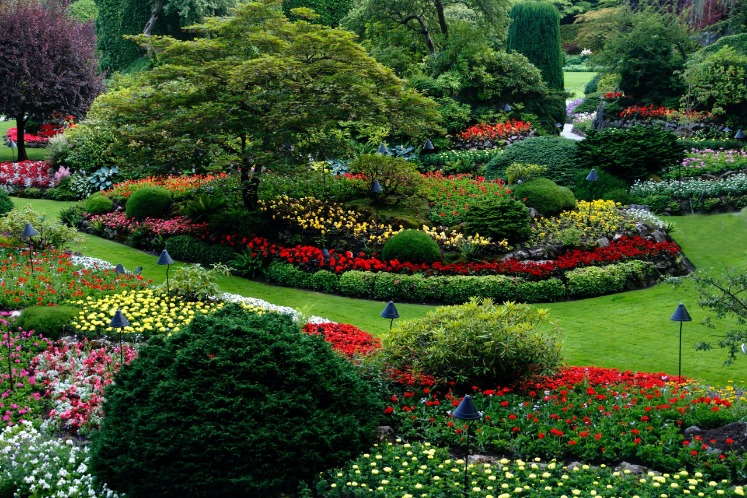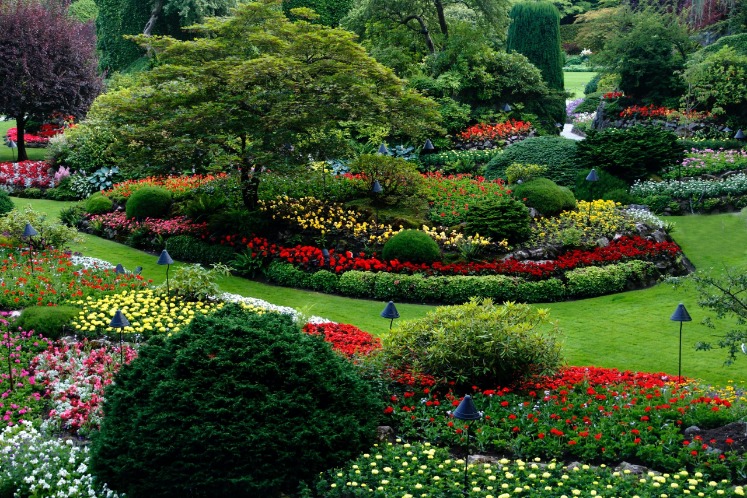Many gardens are planted too densely, and too close to paths and buildings, even by experienced landscape designers who should know how to plan a landscape design, so this is an important step. During the construction phase, the various elements of the design plan are constructed, installed, or planted. This may include installing hardscape features such as retaining walls, patios, and walkways, as well as plants and other soft scape features such as trees, shrubs, and flowers. A contractor or construction team typically manages the construction phase and will work closely with the landscape designer to ensure the design plan is implemented correctly. During this phase, the designer will also make site visits to ensure that the construction is progressing according to plan and to address any issues that may arise.
It is effectively constructed to include pathways along with greenery. So there’s a simple introduction on how to plan a landscape design, but hopefully helpful for you. This is where you turn the bubble diagrams into more definite plans, but you don’t get right into choosing all of the plants yet, except perhaps for the main specimens. Instead, just draw bubble diagrams of where things might go. A pond here, a hedge there, greenhouse here, compost bin there, cistern here, etc. Even if there’s just a lawn next to your house, draw it to scale. Three feet by three feet per square on the graph paper is often good.
From this, you can also create a plant list so you know exactly what you’re looking for as you go to your local garden centers. That can take some observation over the course of the full growing season, but if you don’t have time for that, you’ll have to approximate it by keeping track throughout the day. Positioning plants in the right sun conditions is a big step to helping them be healthy. So what you do, on a planting plan is you draw them the full size they’re going to get to, or at least the size they’re going to get to in say ten years. It kind of depends people have different methods but really I like to draw them to the full size they’re going to get to. I’m drawing things that I know, for example this dining table – I measured the size of it and I drew it. This might be a case where some of the main plants could be drawn in and drawn to size.
Percent of Budget: Pros and Cons
Yards with circular edges, odd-shaped lawns, and slopes or hills are more difficult to measure and will cost more. If regrading or leveling is required, homeowners can expect to pay an additional $1,000 to $3,000 for labor and equipment. The following are some ranges for landscaping costs based on project size. The type of project and the amount you’re willing to spend is a determining factor. If your project is a small residential garden, you should hire a landscape designer. On the other hand, you can hire a landscape architect if it’s a large commercial project.That said, if money is no object, you can hire them both for any project size. Landscape design costs $2,200 to $6,180 on average, and it’s the first step to a beautiful yard that can improve curb appeal and increase home value.
The cost of landscape designs can be high, but a well-thought-out landscape increases home value. It’s always best to start a new landscape or renovation with a professional design.
Read more about Yard Drainage here.
How Can You Achieve the Perfect Front Yard Landscaping?
The design team takes the time to listen to exactly what we are want and provides an excellent plan. When the work gets started, the workers are completely professional, skilled, tidy and efficient. We will continue to use Outback Landscaping and tell anyone who will listen to use them for their landscaping needs.
Urban Landscape Design Restrictions
Read more about Sprinkler System Installation here.





